Kirstin Lemon* outlines the present and future state of UNESCO Geoparks in the UK
In November 2015, UNESCO created its first new designation since 1972, the UNESCO Global Geoparks. For over 40 years geological heritage had received no other recognition than through the World Heritage Programme something that many people felt grossly undersold geologically significant sites. The new UNESCO Global Geoparks designation not only addresses this but it also achieves a much greater level of geoscience awareness. However, many people, including the geoscience community are still unaware of what UNESCO Global Geoparks are and what they do, and more importantly, the opportunities that they provide for both the general public and geoscientists.
What is a UNESCO Global Geopark?
UNESCO Global Geoparks are single, unified geographical areas where sites of international geological heritage are holistically managed for protection, education and sustainable development. Local communities are key to the success of the UNESCO Global Geoparks and their bottom-up approach to development has been one of the significant factors in their rapid growth. At present there are 120 UNESCO Global Geoparks in 33 countries around the world, including 69 in Europe.
How did UNESCO Global Geoparks evolve?
Geoparks were first established in 2000 in response to the lack of recognition of sites of significant geological heritage. This is evident in the World Heritage Programme as less than 2% of sites were designated solely due to their geological heritage. In 2004, 17 European and Chinese Geoparks came together at UNESCO headquarters in Paris to form the Global Geoparks Network (GGN).
Whilst always supported by UNESCO on an ad hoc basis, it was not until 2015, that Global Geoparks were made an official designation of UNESCO within a new International Geoscience and Geoparks Programme. In November of that year, the 195 Member States of UNESCO ratified the creation of the new label of “UNESCO Global Geopark”, expressing governmental recognition of the importance of managing geological sites and landscapes in a holistic manner.
Where are the UNESCO Global Geoparks in the UK?
There are currently seven UNESCO Global Geoparks in the UK stretching from UNESCO Global Geopark Shetland in the far north, right down to the English Riviera UNESCO Global Geopark in the far south, and including the world’s first internationally cross-border Geopark, located between Northern Ireland and the Republic of Ireland, Marble Arch Caves UNESCO Global Geopark.
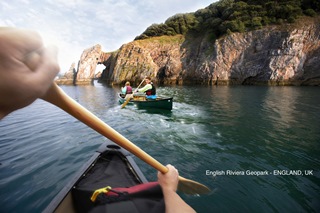 Located within the stunning, rolling hills of South Devon, the English Riviera UENSCO Global Geopark can be found in Torbay, and includes the resort towns of Torquay, Paignton and Brixham. Torbay’s geology has created the beautiful coastline of today that has attracted millions of visitors to the area for hundreds of years. Geologically, the marine Devonian and arid Permian rocks are exposed exquisitely at the coast, and are home to Kents Cavern the most important prehistoric cave dwelling in the UK.
Located within the stunning, rolling hills of South Devon, the English Riviera UENSCO Global Geopark can be found in Torbay, and includes the resort towns of Torquay, Paignton and Brixham. Torbay’s geology has created the beautiful coastline of today that has attracted millions of visitors to the area for hundreds of years. Geologically, the marine Devonian and arid Permian rocks are exposed exquisitely at the coast, and are home to Kents Cavern the most important prehistoric cave dwelling in the UK.
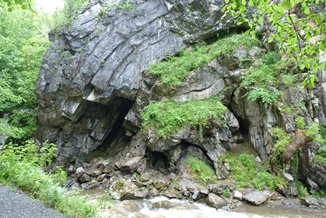 Located in the Brecon Beacons National Park in south Wales, Fforest Fawr UNESCO Global Geopark comprises the western half of the National Park. Its geological history stretches back 480 million years, and includes not only upland areas but much of the surrounding countryside as well. The links between the landscape and the Industrial Revolution are just one of the many stories told in an area steeped in industrial heritage.
Located in the Brecon Beacons National Park in south Wales, Fforest Fawr UNESCO Global Geopark comprises the western half of the National Park. Its geological history stretches back 480 million years, and includes not only upland areas but much of the surrounding countryside as well. The links between the landscape and the Industrial Revolution are just one of the many stories told in an area steeped in industrial heritage.
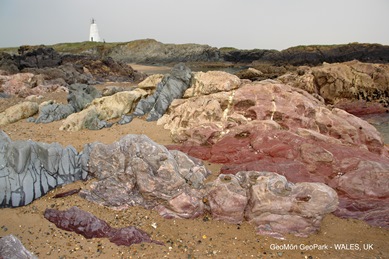 GeoMon takes its name from the Welsh for Anglesey (Mon), and takes in the entirety of this, the largest of the Welsh islands, situated in the northwest corner of Wales. It has a spectacular geological heritage with rocks spanning four eras, 12 geological periods and 1,800 million years of geological history. With more than 100 rock types, there is evidence of at least four mountain building periods providing a staggering array of colours and structures visible around the Anglesey coast, and giving the island its local distinctiveness and character.
GeoMon takes its name from the Welsh for Anglesey (Mon), and takes in the entirety of this, the largest of the Welsh islands, situated in the northwest corner of Wales. It has a spectacular geological heritage with rocks spanning four eras, 12 geological periods and 1,800 million years of geological history. With more than 100 rock types, there is evidence of at least four mountain building periods providing a staggering array of colours and structures visible around the Anglesey coast, and giving the island its local distinctiveness and character.
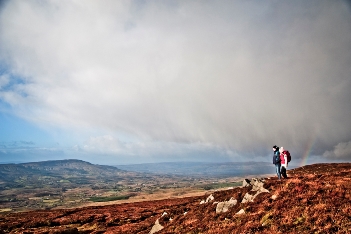 Straddling the border between Co. Fermanagh in Northern Ireland and Co. Cavan in the Republic of Ireland, the Marble Arch Caves UNESCO Global Geopark was the first area in the UK to be recognized as a Geopark in 2001. Centred on the iconic Cuilcagh Mountain, there is a vast geological history stretching as far back as the Precambrian period, but dominated by Carboniferous limestone, shale and sandstone. The landscape is made up of rugged uplands, tranquil lakes and rolling drumlins providing the perfect backdrop for many recreational pursuits.
Straddling the border between Co. Fermanagh in Northern Ireland and Co. Cavan in the Republic of Ireland, the Marble Arch Caves UNESCO Global Geopark was the first area in the UK to be recognized as a Geopark in 2001. Centred on the iconic Cuilcagh Mountain, there is a vast geological history stretching as far back as the Precambrian period, but dominated by Carboniferous limestone, shale and sandstone. The landscape is made up of rugged uplands, tranquil lakes and rolling drumlins providing the perfect backdrop for many recreational pursuits.
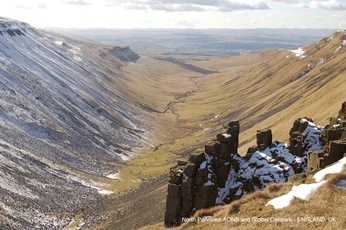 Located in the uplands in the north of England, the North Pennines AONB UNESCO Global Geopark stretches across the counties of Durham, Northumberland and Cumbria. The landscape reflects the nearly 500 million years of geological history, a good deal of which is made up of Carboniferous limestone, shale and sandstone. However, the North Pennines is most famous for its mineral veins where, over the centuries lead ore and other minerals have been mined leaving behind a rich industrial and cultural heritage.
Located in the uplands in the north of England, the North Pennines AONB UNESCO Global Geopark stretches across the counties of Durham, Northumberland and Cumbria. The landscape reflects the nearly 500 million years of geological history, a good deal of which is made up of Carboniferous limestone, shale and sandstone. However, the North Pennines is most famous for its mineral veins where, over the centuries lead ore and other minerals have been mined leaving behind a rich industrial and cultural heritage.
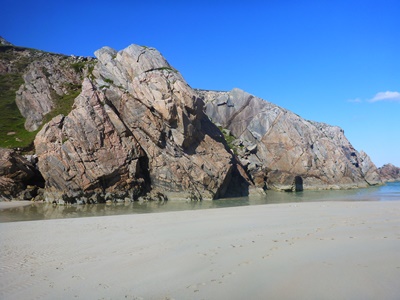 Seen by many geologists as the cradle of modern geology, the North West Highlands UNESCO Global Geopark is located in the far north west of Scotland and encompasses some of the finest mountains and coastal landscapes in the UK. It contains some of the oldest rocks in Europe with the Lewisian gneisses being around 3000 million years old, and is dominated by the internationally important Moine Thrust Zone, the first thrust belt ever to be scientifically documented.
Seen by many geologists as the cradle of modern geology, the North West Highlands UNESCO Global Geopark is located in the far north west of Scotland and encompasses some of the finest mountains and coastal landscapes in the UK. It contains some of the oldest rocks in Europe with the Lewisian gneisses being around 3000 million years old, and is dominated by the internationally important Moine Thrust Zone, the first thrust belt ever to be scientifically documented.
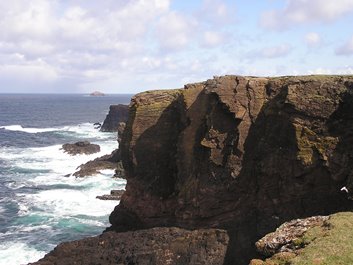 The most northerly of the UK UNESCO Global Geoparks, and taking in all of the islands that make up the Shetland archipelago, UNESCO Global Geopark Shetland contains rocks from every geological period from the Precambrian to the Carboniferous. Its rocks tell an amazing story of how the world has formed and changed, with oceans closing and opening, as well as mountains forming and eroding. Its northerly location also means that it is a haven for wildlife, especially birds, as well as having a strong Norse heritage all of which are intricately linked with the landscape.
The most northerly of the UK UNESCO Global Geoparks, and taking in all of the islands that make up the Shetland archipelago, UNESCO Global Geopark Shetland contains rocks from every geological period from the Precambrian to the Carboniferous. Its rocks tell an amazing story of how the world has formed and changed, with oceans closing and opening, as well as mountains forming and eroding. Its northerly location also means that it is a haven for wildlife, especially birds, as well as having a strong Norse heritage all of which are intricately linked with the landscape.
Each of the Geoparks in the UK is a member of the Global Geoparks Network and plays an active role in the UK Committee for UNESCO Global Geoparks, the National Committee for UNESCO Global Geoparks in the UK.
How can geoscientists benefit from UNESCO Global Geoparks?
Whilst UNESCO Global Geoparks have a strong economic development function, they also have a strong educational and research role especially under the broad themes of best practice in managing natural resources, climate change and geological hazards. Many of the UNESCO Global Geoparks in the UK work with local universities and research institutes to deliver this but there is room for significant improvement and in particular in the role that geoscientists can play in research in the UK Global Geoparks. The ready-made network of partners, not just within the UK, but also across the globe, allows for access to a broad range of skills and expertise that would be difficult to find elsewhere.
UNESCO Global Geoparks are the front line of geoscience. For many members of the general public this is the first (and often only) interface that they have with geology. They are therefore ideal to demonstrate the impact of geoscience research, outside of the traditional outputs of scientific writing. UNESCO Global Geoparks provide a vital link in to local communities that are able to perfectly display the economic, societal and educational impact of geological research. The UK National Commission for UNESCO has recently published many of these findings in a report - Wider Value of UNESCO to the UK 2014 - 2015.
There is an increasing emphasis from the UK government to contribute to Overseas Development Assistance (ODA). There are a number of UNESCO Global Geoparks and aspiring UNESCO Global Geoparks in countries named on the DAC list of ODA eligible countries including (but not limited to) Indonesia, Morocco, Viet Nam, Brazil, China and Mexico. By working with the UNESCO Global Geoparks in the UK, geoscientists could make a substantive contribution to the promotion of economic development in ODA eligible countries.
The bottom-up approach of UNESCO Global Geoparks is a significant contributor to their success and is something that geoscientists could find particularly advantageous. By getting involved with the UNESCO Global Geoparks in the UK it would help to better improve collaboration and cooperation not only within the geoscience community but also between geoscientists and the general public. UNESCO Global Geoparks could ultimately provide the ideal platform to communicate topical issues and build trust and understanding especially in areas where this has previously been non-existent.
*British Geological Survey, Vice-Chair of the United Kingdom Committee for UNESCO Global Geoparks